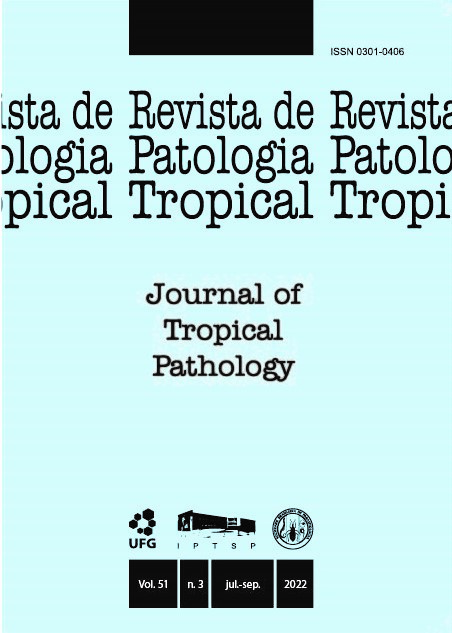Evolution of the prevalence and antimicrobial resistance among Escherichia coli isolated as a cause of infection in patients admitted to a iv-level hospital in Lima, Peru
DOI:
https://doi.org/10.5216/rpt.v51i3.74360Resumo
The levels and evolution of antimicrobial resistance of Escherichia coli during 01/2009-06/2010 (Period 1), 01/2012-06-2013 (Period 2) and 07/2013-12/2014 (Period 3) were analyzed. Identification, susceptibility levels to 13 antibiotics and the presence of extendedspectrum β-lactamases (ESBLs) were determined. Overall, 9,918 microorganisms were isolated as a cause of infection. Of these 3,016 (30.4%) were E. coli, with 1,770 (59%), 992 (33%) and 254 (8%), from the Medicine and the Surgery Departments and the Intensive Care Unit (ICU), respectively. There was a significant increase (p=0.0002) of E. coli throughout considered periods. The isolates presented high levels of resistance (>60%) to cephalosporins, ciprofloxacin and cotrimoxazole, being only susceptible to imipenem (0.3% of resistance) and tigecycline. Overall the analysis of evolution of antimicrobial resistance showed that resistance to cephalosporins and amikacin significantly increased, while, the ones of piperacillintazobactam, cotrimoxazole and gentamicin had significantly decreased. Nevertheless, the ICU isolates showed an inverse scenario for cephalosporins. These findings agree with an increase of ESBLs on the Medicine (56% to 66%; p<0.0001) and on the Surgery (54% to 62%; p=0.0197) departments, with a parallel decrease in the ICU (76% to 68%). In summary, high levels of antimicrobial resistance have been reported among E. coli, with worrisome levels of ESBL. A continuous surveillance of antimicrobial resistance levels in the area is needed.
KEY WORDS: Escherichia coli; antimicrobial resistance; cephalosporins
Downloads
Downloads
Publicado
Como Citar
Edição
Seção
Licença
The manuscript submission must be accompanied by a letter signed by all authors stating their full name and email address, confirming that the manuscript or part of it has not been published or is under consideration for publication elsewhere, and agreeing to transfer copyright in all media and formats for Journal of Tropical Pathology.

